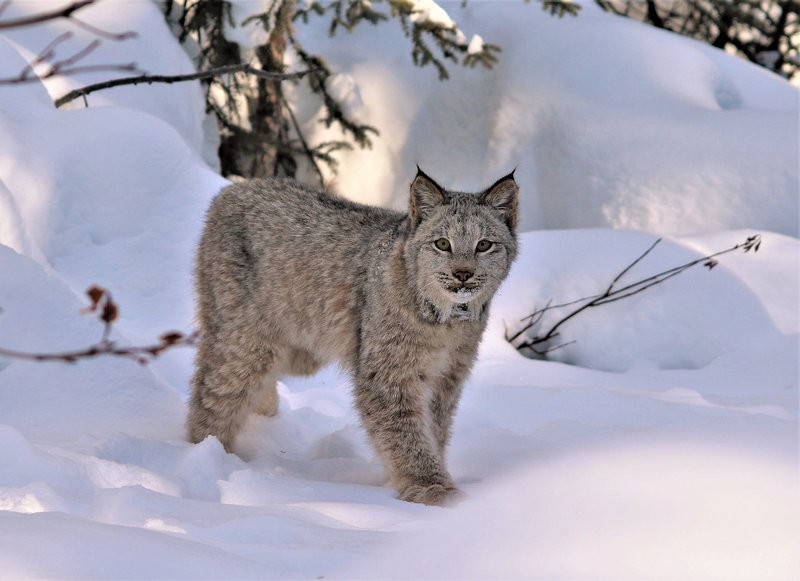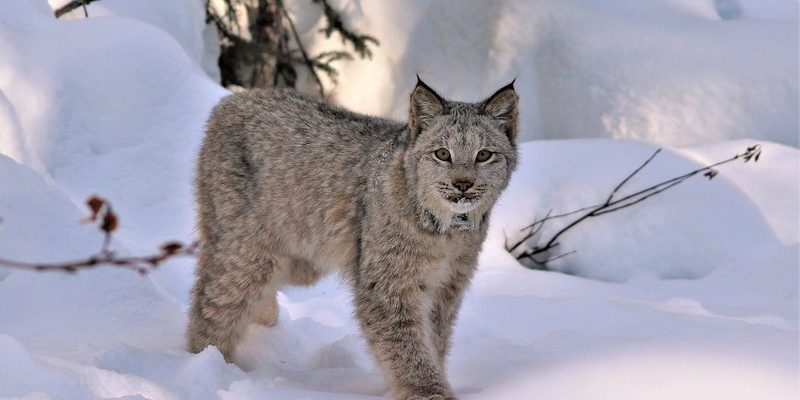
Understanding how smart a Canada Lynx is involves a bit of detective work. Just like we might try to figure out how smart a dog is based on how they respond to commands or solve puzzles, we can observe the behavior of a Canada Lynx in the wild. This gives us insights into their thinking patterns and how they adapt to their surroundings. So, grab your coffee, and let’s explore the fascinating world of Canada Lynx intelligence!
What Makes Canada Lynx Unique?
The Canada Lynx is a striking wild cat that thrives in the colder northern climates of North America. They are easily recognizable by their tufted ears, short tail, and long legs, which give them a unique stature among wild cats. More than just their looks, the Canada Lynx is intriguing due to its specific adaptations that highlight its intelligence.
You might be surprised to learn that the Canada Lynx is especially well-adapted for hunting snowshoe hares, its primary food source. Their keen sense of hearing allows them to detect movements in the snow, and their large, furry paws act like snowshoes, enabling them to navigate deep snow more easily. This adaptation showcases not just physical prowess but also a level of smart hunting strategy, indicating that there’s a lot of thought that goes into how they survive.
When it comes to intelligence, Canada Lynx exhibit skills in problem-solving and spatial awareness. For example, they can remember locations of their hunting territories and navigate through their environment with great efficiency. This is a strong indicator that they possess a form of cognitive ability, allowing them to adapt their behavior based on the availability of prey and changing weather conditions.
The Hunting Techniques of the Canada Lynx
Hunting is where the cleverness of the Canada Lynx shines bright. Unlike domestic cats, which might pounce on anything that moves, the Canada Lynx uses its intelligence to strategize. They tend to be stalk-and-ambush hunters, meaning they take their time to plan the perfect moment to strike.
Let’s break it down a little further. When a Canada Lynx spots a snowshoe hare, it will often freeze, crouching low to the ground. Here’s the thing: they don’t just rush in. Instead, they wait patiently until they see an opening. This shows an understanding of prey behavior—an intelligent mix of patience and assessment.
Additionally, Canada Lynx employ stealth. They’ll use the terrain to their advantage, hiding behind trees or snow drifts to get closer to their target. This kind of strategic thinking is reflective of their problem-solving skills, showing that they rely on experience and learned behavior for their success as hunters.
Social Behaviors and Interactions
When we talk about intelligence, we often think of social behaviors. Canada Lynx are generally solitary animals, which means they don’t typically hunt or live in packs like wolves or lions. However, this doesn’t mean they lack social intelligence.
During the mating season, they engage in complex courtship behaviors that showcase their ability to communicate and express intent. They leave scent markings to signal their presence to other lynxes, which involves a level of understanding of territory and social dynamics. In many ways, it’s like putting up a sign that says, “Hey, I’m here—find your own space!”
After the mating season, females exhibit nurturing behaviors that highlight their intelligence in caring for their young. They often keep their kittens hidden in dens for safety, carefully choosing locations that offer protection from predators. This behavior not only protects the young but also illustrates their awareness of potential dangers in their environment.
Problem-Solving Skills
You might be wondering how Canada Lynx tackle challenges in their day-to-day lives. Like other intelligent animals, they possess problem-solving skills that allow them to adapt to various situations. For instance, if a particular hunting route becomes ineffective, a lynx will explore new areas instead of stubbornly sticking to the old path.
In addition, they are known to use their environment creatively. If they can’t catch a hare in the open, they might move to areas with higher vegetation cover to increase their chances of ambushing their prey. This adaptability shows a level of cognitive flexibility, indicating they can learn from experiences and alter their behaviors accordingly.
For example, during harsh winters when food becomes scarce, Canada Lynx have been observed changing their hunting strategies. They might diversify their diet by targeting other small mammals or birds, showcasing their ability to think critically about survival.
Intelligence in Captivity
So, how does a Canada Lynx behave in a controlled environment, like zoos or wildlife sanctuaries? Interestingly, their intelligence becomes even more apparent. In captivity, these wild cats are presented with challenges, like puzzle feeders, that encourage them to think and engage.
Zoos often implement enrichment activities to keep these animals mentally stimulated. This could include hiding food in various locations or providing toys that mimic the movement of prey. Observations show that Canada Lynx can figure out these puzzles fairly quickly, reflecting their problem-solving skills and curiosity.
Moreover, their interactions with keepers can shed light on their intelligence. A Canada Lynx may learn to respond to certain cues from trainers, demonstrating its capacity for learning through reinforcement. This ability to adapt to an interaction that resembles natural behaviors illustrates their cognitive complexity.
The Bigger Picture: Understanding Wild Intelligence
When we think about intelligence, especially in wild animals like the Canada Lynx, it’s essential to consider what that means in the context of survival. Their cognitive skills, problem-solving tactics, and social behaviors all contribute to their ability to thrive in a challenging environment.
Wild intelligence is often about adapting to change and learning from experiences, qualities that define the Canada Lynx. As they navigate their habitats, whether in the wilderness or in controlled settings, they show us that intelligence is not just about raw brainpower but also about the ability to use what you have effectively.
In conclusion, the Canada Lynx is not just another beautiful wild cat; it’s a testament to the complexity of animal intelligence. By studying their behaviors and adaptations, we gain insights into the remarkable ways that life can evolve to meet the challenges of the environment. So, next time you see a picture of one of these magnificent creatures, remember: there’s a clever mind behind those big, tufty ears!

